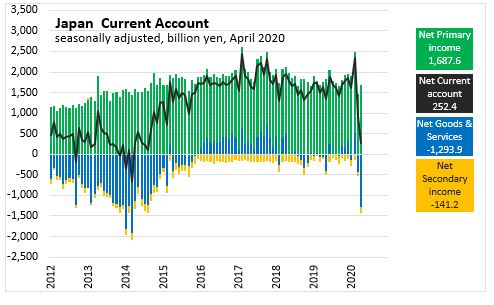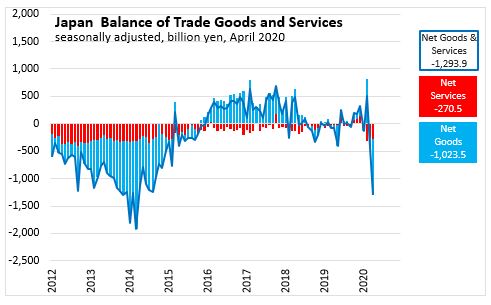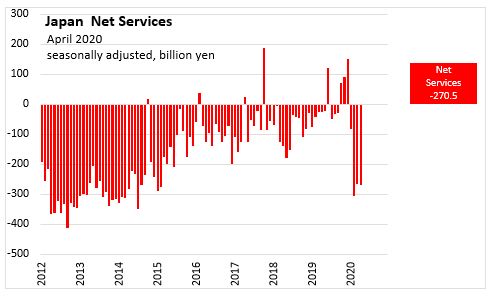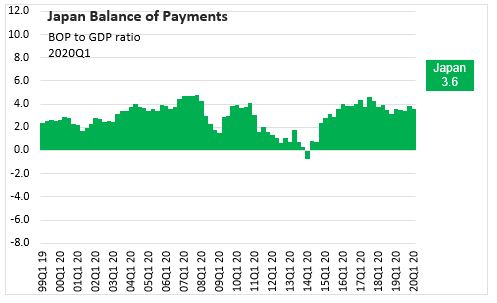The Economics and Statistics Division maintains archives of previous publications for accountability purposes, but makes no updates to keep these documents current with the latest data revisions from Statistics Canada. As a result, information in older documents may not be accurate. Please exercise caution when referring to older documents. For the latest information and historical data, please contact the individual listed to the right.
<--- Return to Archive
For additional information relating to this article, please contact:
June 09, 2020JAPAN CURRENT ACCOUNT, TRADE BALANCE, APRIL 2020 During the COVID-19 pandemic, comparisons of year-to-date averages and sums do not show Nova Scotia’s rapidly changing economic situation. The DailyStats will focus on year-over-year comparisons, comparing one month with the same month in the prior year. Where possible the DailyStats will make comparisons of seasonally adjusted data from the pre-COVID-19 period (January and February 2020) with the period during which COVID-19 measures were in place from March 2020 onwards.
Current Account

In April 2020, Japan reported
- Goods & services trade deficit widened by 871.7 billion yen to 1,294 billion yen
- Primary income surplus widened by 216 billion yen to 1,688 billion yen
- Secondary income deficit widened by 34 billion yen to 141 billion yen
- As a result, Current account surplus narrowed by 690 billion yen to 252 billion yen over March 2020.

Trade Balance

In April 2020, Japan 's
- Export goods trade decreased 885 billion yen to 4,873 billion yen over March 2020 and decreased 1,636.8 billion yen over April 2019.
- Import goods trade decreased 19 billion yen to 5,897 billion yen over March 2020 and decreased 661.9 billion yen over April 2019.
- As a result, Net Goods trade deficit widened by 866 billion yen to 1,024 billion yen
- Net Services trade deficit widened by 6 billion yen to 271 billion yen
- As a result, Goods & services trade deficit widened by 871.7 billion yen to 1,294 billion yen over March 2020.
CURRENT ACCOUNT AS A SHARE OF GDP
The ratio of the current account balance to the Gross Domestic Product (or % of GDP) provides an indication of the country's trade and income flows relative to the size of the economy.
The ratio is calculated by dividing the net values of exports less imports, primary Income (interest and dividends) and secondary income (transfers) over a period by the gross domestic product for the same period. Although called a ratio, it is usually expressed as a percentage.
A current account surplus indicates upward pressure on the foreign exchange rate unless it is offset by net outflows (leading, acquisition of assets) outside the country.
- In the period 1999Q1 to 2000Q4, Japan's current account to GDP measure was positive, ranging from 1.7% to 4.8%.
- With the recession in 2008-2009, Japan's current account to GDP measure declined to a low of 1.5% in 2009Q1 but quickly recovered to a local high of 4.1% in 2010Q4.
- Over the next 13 quarters (2011Q4 to 2014Q1), Japan's current account to GDP measure ranged from -0.7% to 4.1%.
- Over the next 14 quarters (2014Q1 to 2017Q3), Japan's current account to GDP measure ranged from -0.7% to 4.6%.
- Over the next 8 quarters (2017Q3 to 2019Q2), Japan's current account to GDP measure ranged from 3.1% to 4.6%.
- Year-over-year (2019Q1 to 2020Q1), Japan's current account to GDP measure was virtually unchanged.
- Quarter-over-quarter (2019Q4 to 2020Q1), Japan's current account to GDP measure has declined 0.27 points to 3.6%.

REFERENCES
Report | Press Release | Balance of Payments
Based on Table 6s-a-2 Current Account (seasonally adjusted), Monthly
OECD BOP as a % of GDP
<--- Return to Archive